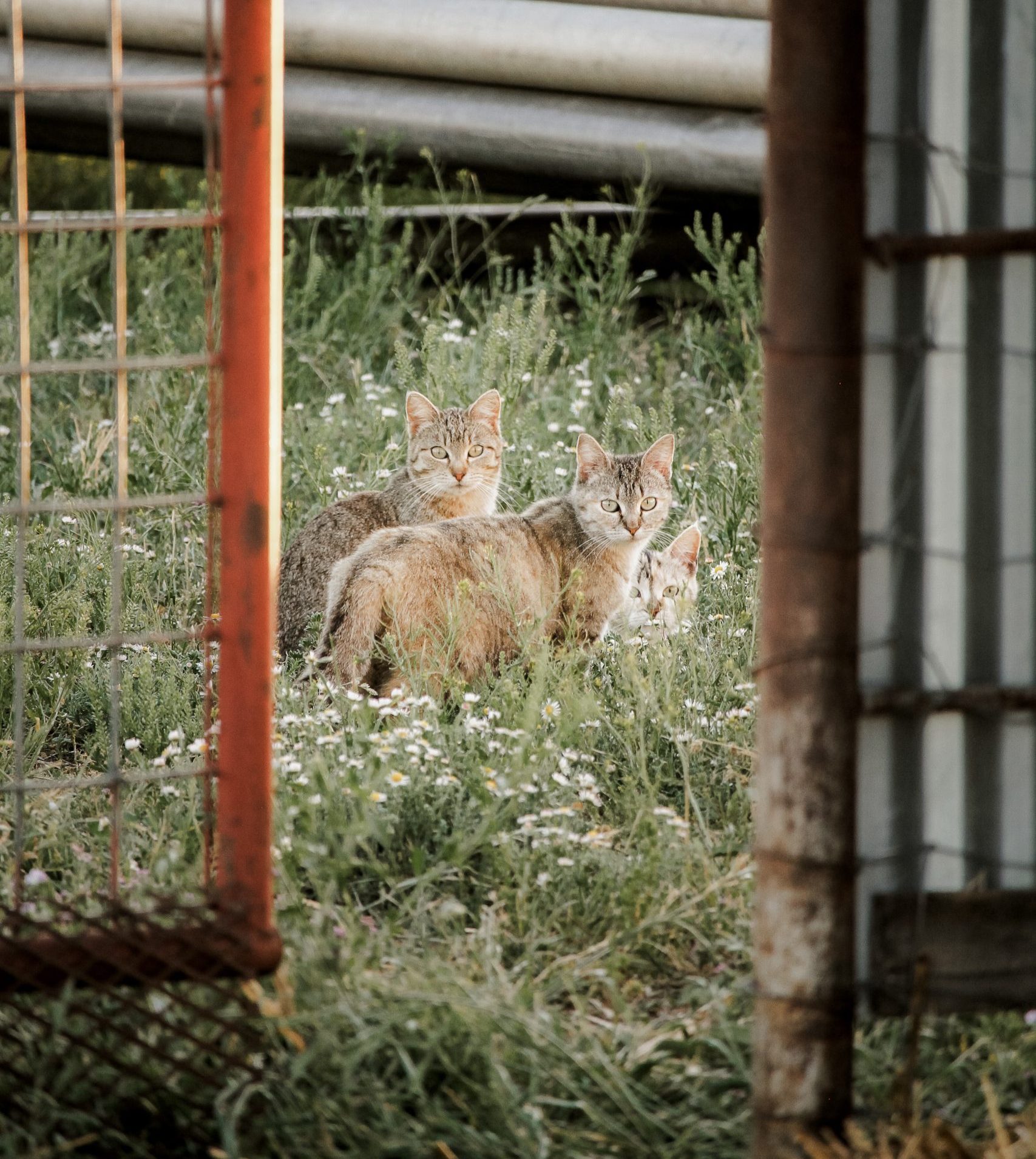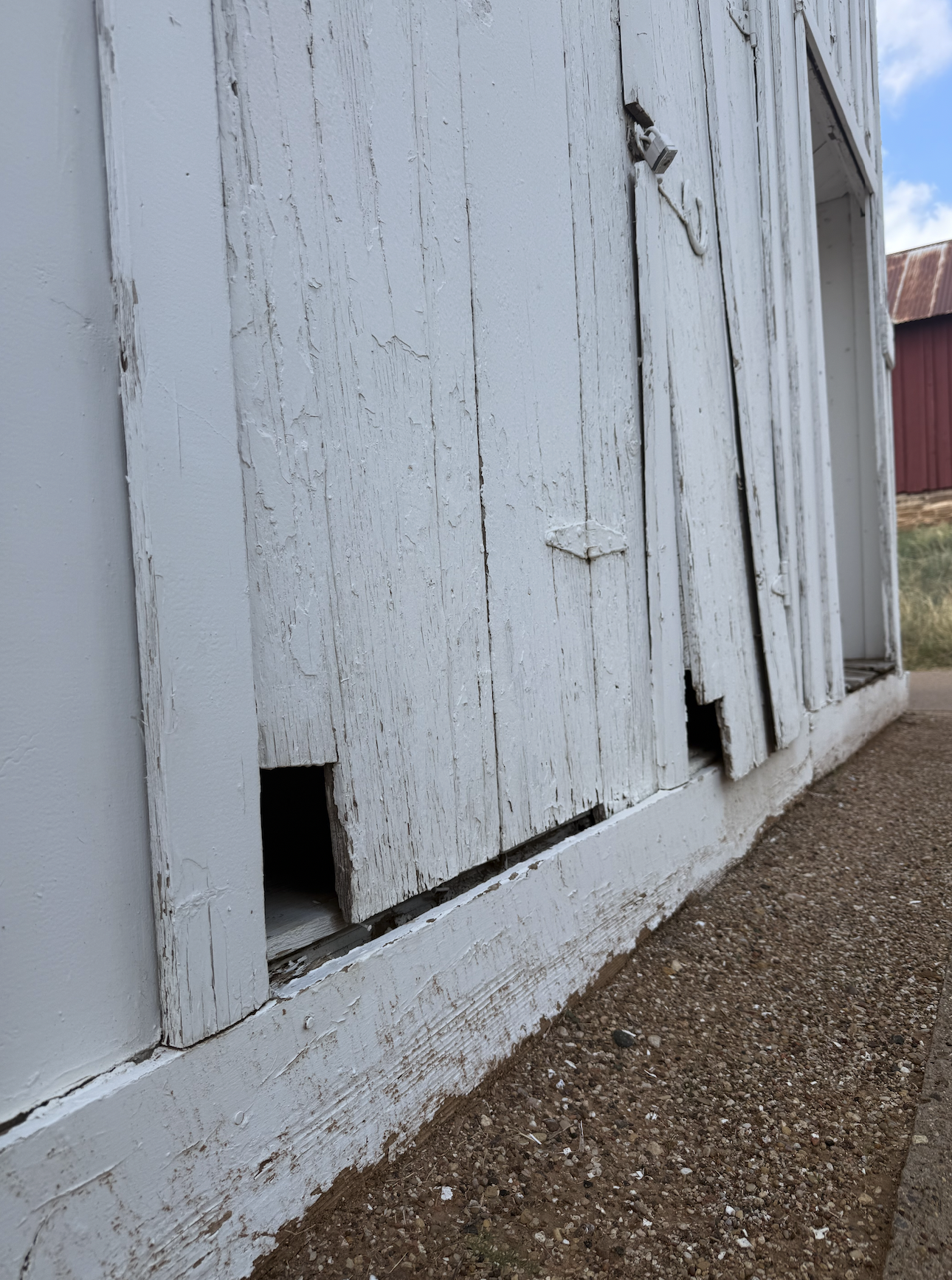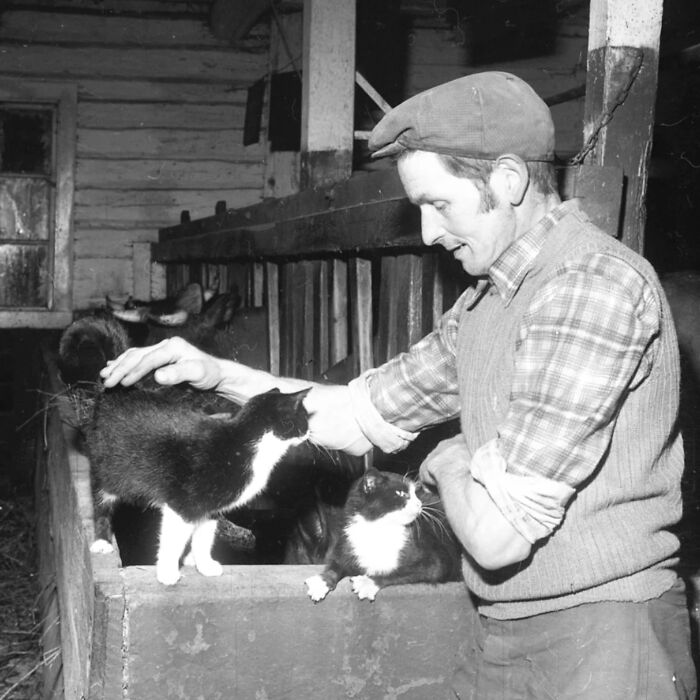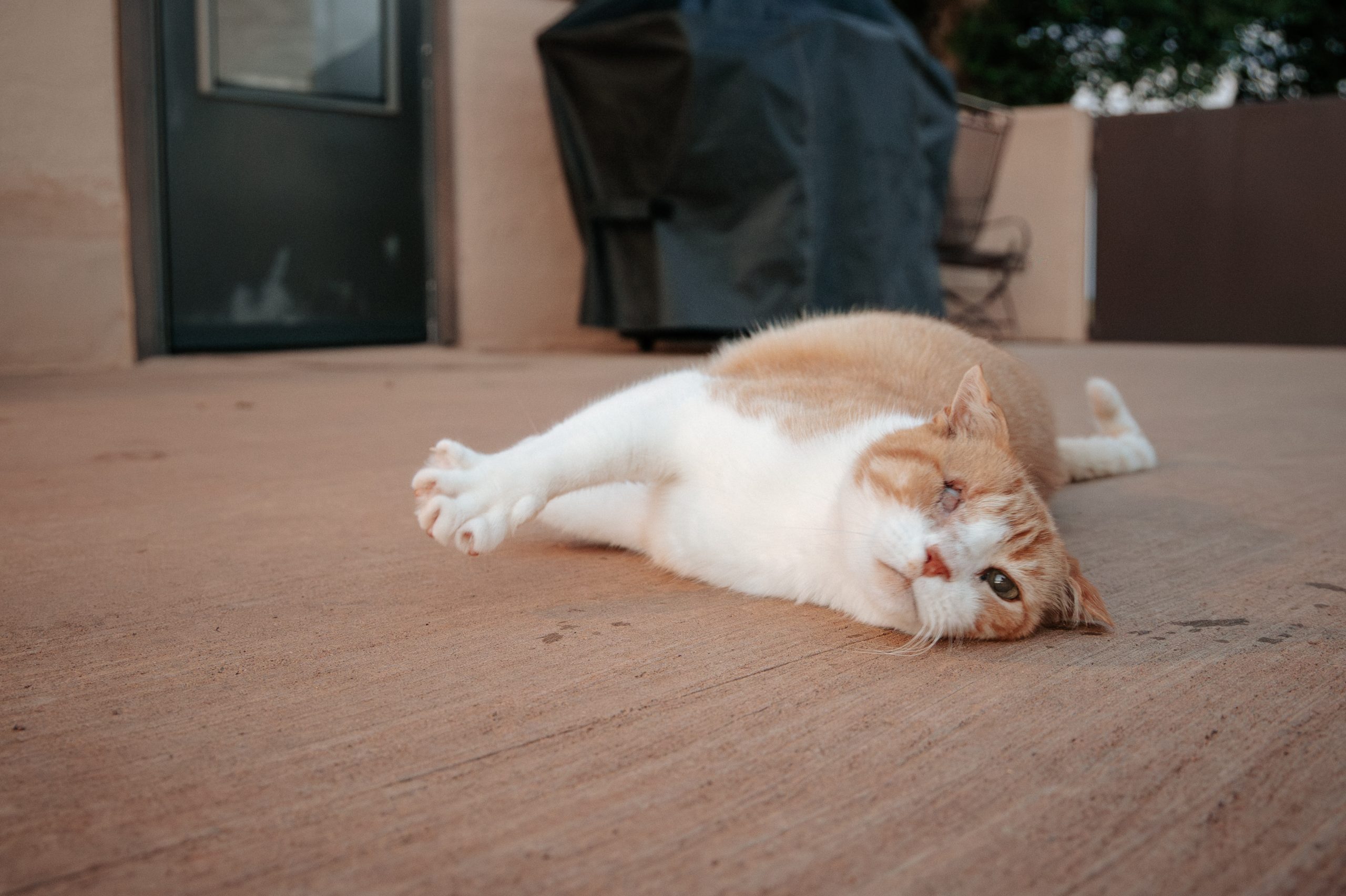
Barn cats out on the hunt. Photo by Adrian Hawkins.
Out on the ranch, not every working hand wears boots and spurs. Some come with soft paws, sharp eyes, and a knack for keeping the feed room safe from tiny intruders. For thousands of years, barn cats have been the quiet guardians of ranches and homesteads, protecting stored food and grains, forming a mutual partnership with people, and offering a touch of companionship out on the range.

Small doorways were cutout of the U Lazy S Carriage House for the mousers on patrol.
On the c. 1906 U Lazy S Carriage House, you can find rectangular cut-outs in the base of the doors that allowed the “Chief Mousers” to come and go on rodent patrol. These little doorways now stand as a testament to those furry ranch hands and their lasting role in the daily rhythm of ranch life—symbols of self-reliance and the timeless partnership between people and animals on the land.
Meow & Then
The story of the barn cat begins nearly 10,000 years ago, when humans first shifted from nomadic lifestyles to settled agriculture. A surplus of stored grains attracted rodents, and wild cats soon followed, drawn by an easy food source and safe shelter. These early barn cats were semi-feral, self-sufficient creatures who needed little more than a place to hunt and the occasional scrap from their human neighbors.
Ancient Egyptians were among the first to welcome cats not only as pest control but as sacred symbols of protection and fertility as far back as 7500 B.C. From there, cats traveled trade routes through Europe and Asia—boarding ships as pest control officers and finding homes wherever grain and rodents coexisted.
European settlers later brought cats to North America for the same reasons, and the animals quickly adapted to life on ranches and homesteads. Many families came to see barn cats as indispensable allies. In some cases, a thriving cat colony could mean the difference between a protected food supply and a ruined harvest. By the 18th and 19th centuries, barn cats had cemented their place in rural America, quietly fulfilling a role that helped agriculture flourish amid the challenges of early frontier life.

A farmer petting barn cats, c. 1972.
More Than Mousers
While pest control remains their most practical role, barn cats have earned a deeper place in ranch culture, adding life and warmth to the rhythm of the ranch.
For generations, they’ve also served as a child’s first lesson in gentleness and respect or a cowboy’s quiet companion after a long day. Their independence is admired, their resilience respected, and their presence, somehow, feels essential to the ranch itself.
A “Purrtnership” That Endures
Even with modern pest control methods, barn cats remain part of ranch life today, helping reduce the need for chemical poisons and keeping a natural balance in place. Many ranch families still maintain small colonies, often spaying and neutering to keep populations healthy and from overpopulating.
Many of today’s barn cats are also part of organized programs that value both their usefulness and their welfare. Across the country, “working cat” or “barn cat” adoption initiatives help relocate feral or semi-feral cats that aren’t suited for indoor life but thrive in outdoor, rural settings. These programs humanely trap, vaccinate, and spay/neuter the cats before placing them on farms and ranches where they can live safely and naturally while still doing the important work they’ve always done.
Most aren’t pets in the traditional sense—but they’re a quiet part of the ranching story. And on a ranch, their work counts for a lot.

Barn cat helping a young cowgirl saddle her pony for the day. Taken at Griffin Ranch. Photo by Adrian Hawkins.
Sources: Morning AgClips, Meow and Then: History of Barn Cats by Lila Nolan; The Charm and Utility of Barn Cats, Miller Manufacturing Co.; The History of Domestic Cats, Alley Cats Allies


